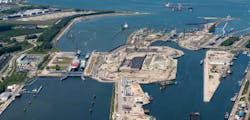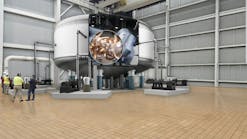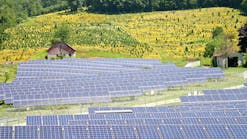By Kathy Hitchens, Special Projects Editor, Microgrid Knowledge
Swedish furniture giant IKEA’s Adelaide, Australia, location is home to more than just affordable furniture and Swedish meatballs. It now hosts what’s being touted as the largest grid-connected urban virtual power plant in the country.
Dubbed the IKEA eleXsys Microgrid, the 1.2-MWh installation includes a rooftop array with 3,024 solar panels and a 3.45-MWh battery that’s the size of three 40-foot shipping containers.
The microgrid’s systems are managed by the eleXsys dynamic voltage control platform and Azzo's EnergyX IoT platform.
Jonathan Ruddick, chief financial officer at Planet Ark Power, the Australian solar, battery and microgrid solutions provider behind the eleXsys platform, said the technology allows the platform to “connect to up to 10 times more energy than solar technology and grid constraints currently allow.”
A collaboration made in Australia
The $6.6 million project was partially funded by a $1.95 million grant from the South Australian government’s Renewable Technology Fund.
Epic Power owns and operates the microgrid, which was developed in partnership with IKEA, Planet Ark Power, SA Power Networks and the South Australian government.
“This microgrid project is the perfect example of collaboration between the business community, industry and government to help shift the dial on clean energy production in Australia,” said Peter Richmond, IKEA Australia’s sustainability lead.
IKEA Adelaide will soon be 100% solar powered
First announced in 2020, with the rooftop PV component energized in February 2022, the microgrid currently supplies 70% of the power needed for the IKEA store.
Phase two of the project, which is expected to be completed by 2025, will see the microgrid meeting 100% of the store’s electricity demand through additional photovoltaics (PV) that will be installed on sustainably sourced timber shade structures across the parking lot.
“IKEA is committed to becoming a circular and climate-positive business,” Richmond said.
The microgrid will also support the grid
The microgrid will also support the South Australian power network by sending excess energy to the grid during times of peak demand. It is expected it will eliminate 890 tons of carbon dioxide emissions each year.
“The microgrid not only maximizes clean energy generation in SA, but also avoids expensive network upgrades and provides grid support to the state’s electricity network, benefitting the wider South Australian community,” said Planet Ark Power’s Ruddick.
Clive D’Cruz, CEO of Epic Energy, added, “Investing in Australia’s first of its type urban microgrid supports our offtake partner IKEA in achieving their climate-positive goals while benefiting the local community through supporting grid stability.”
When phase two is implemented, the microgrid’s partners say the system will be able to deliver even more clean, renewable energy to support the South Australian grid.
The microgrid, which was officially commissioned by South Australia’s Minister of Energy and Mining Tom Koutsantonis, won the Innovation and Collaboration category of the 2022 South Australia Premier’s Energy and Mining Awards.





